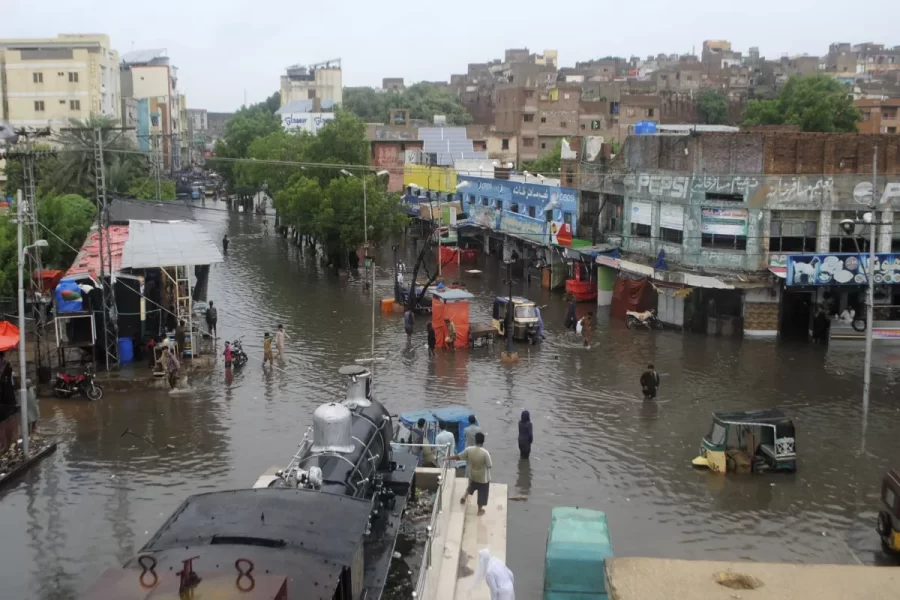Hurricanes and floods everywhere
Courtesy of the Los Angeles Times
Floods in Pakistan over the summer months
Hurricane Danielle, Hurricane Earl, Hurricane Fiona, Hurricane Ian, Hurricane Julia, and Hurricane Darby are some of the many names of the tropical cyclones that have taken place in the Atlantic and Pacific hurricane season this year. These natural disasters have devastated millions across North America, especially in the Caribbean. In addition, Monsoon rains in Pakistan have caused floods of an enormous scale, destroying hundreds of thousands of homes and leaving many displaced. The monsoons in India have been more severe than usual, causing major floods. A dire problem that emerges is that these instances of natural destruction affect some more than others.
A Washington Post study found that since 1990, a growing number of tropical cyclones have undergone a period of rapid intensification. Hurricanes need ocean waters over 79 degrees Fahrenheit to thrive, and ocean temperatures have been increasing steadily since the 1960s when many places in the world, including the United States, United Kingdom, and other countries, were becoming industrial powerhouses. Today, China, the United States, India, Russia, and Germany lead the world in carbon emissions, and the presence of carbon dioxide in the atmosphere directly leads to rising temperatures and, ultimately, rising sea levels.
According to the United Nations, LEDCs (Less economically developed countries) of the world accounted for about 1.1% of the world’s total carbon emissions in 2019. However, LEDCs are disproportionately affected by climate change and its effect on weather patterns. This is because they have fewer resources to utilize when natural destruction strikes, creating more significant populations of people in poverty. Rising global temperatures and sea levels can directly impact one’s livelihood. To make matters worse, those in poverty have to wait months and sometimes even years for relief efforts after a hurricane, while those wealthier can begin to rebuild on their own.
Christina Chan, director of the World Resource Institute’s Climate Resilience Practice, said, “The world’s poorest communities often live on the most fragile land, and they are often politically, socially, and economically marginalized, making them especially vulnerable to the impacts of climate change.”
On the other hand, MEDCs (more economically developed countries) and AC (advanced countries), including the United States, Canada, and the United Kingdom, have the funds and resources to rebuild entire cities after devastating natural disasters. In 2017, when Hurricane Harvey hit Texas, the Federal Emergency Management Agency (FEMA) of the United States, within 30 days, gave more than $1.5 billion in federal funds to Texans who were impacted by the hurricane and around 3 million meals and three millions liters of water were distributed. This kind of treatment after a natural disaster could not be expected in LEDCs such as Bangladesh, in which many people displaced due to significant flooding have been forced to move into cramped urban slums in the cities.
Eliot Levine, director of the environment technical support Unit at Mercy Corps, said, “Climate change is going to amplify the already existing divide between those who have resources and those who do not.”
The truth is that although many of us do not see it in our day-to-day life, the troublesome impacts of climate change are not just a thing that is coming in the future but something that is already occurring. The most vulnerable countries are currently affected the most by climate change. When the hurricane, tropical storm, or cyclone eventually passes, individuals are left to pick up the pieces largely on their own.


